Making A Braggot – Basic Braggot Recipe
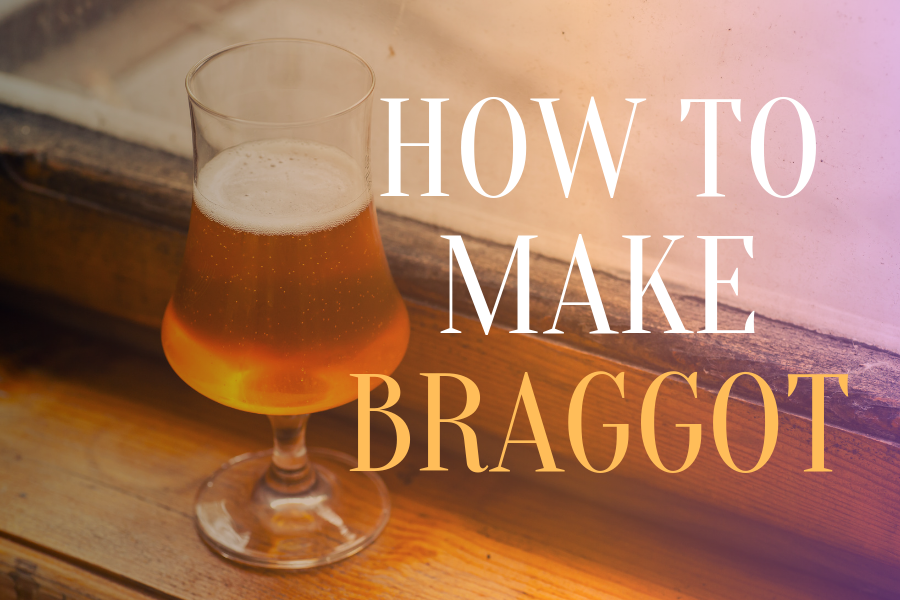
Beer and mead. These two drinks are as old as history itself. Wherever there are fermentable grains you find beer. Wherever there’s plenty of honey you find mead. And when both are in abundance, you get braggot.
Braggot is not always a readily available drink as it would have been in the past so that is all the more reason to try brewing your own with this braggot recipe.
Table of Contents
Brief History Of Braggot
Mixing honey and grains for fermentation is a practice so old that even the fabled “Hymn to Ninkasi” – the cuneiform ode to the Sumerian goddess that actually comes with a beer recipe – cites it as a traditional practice. This text dates back to 1800 BC!

Whether beer, mead, or wine was the very first fermented beverage is still unclear, and quite possibly will remain this way. But truth is that these alcoholic drinks were around well since the dawn of civilization, and crossovers were anything but unusual.
In fact, mixing all three was a rather common practice. If you’ve ever tasted a modern commercial example the famous Midas Touch by Dogfish Head, you probably know that its recipe is based on the microbiological analysis of the vessels found in the tomb of Phrygian king Midas, dating back to 8th century BC. And it had malted barley, honey, and grapes in it, among other things.
All-in mixes aside, a hybrid of beer and mead has seen numerous iterations all around the globe. Most notably Northern Europe, where both fermentables for this drink were quite common.
Historically, braggot relied on a variety of local spices or herbs to enhance the flavour. However, with the introduction of hops into the brewing process, it became quite common to have hopped versions of braggot as well.
Not to mention the use of fruits such as apples, pears, plums, cherries, and many others as additional fermentables and flavouring agents.
Today, braggot is experiencing a revival thanks to the immense popularity of both craft beer and craft mead.
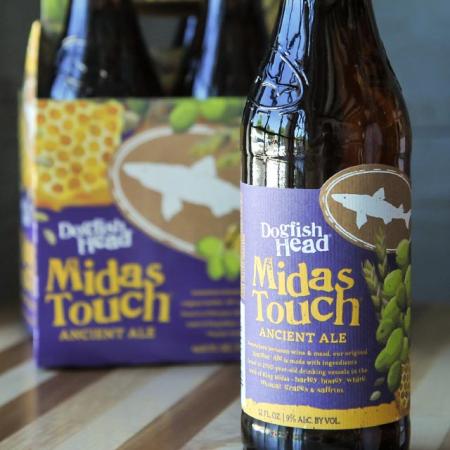
A few breweries and meaderies have made braggot on and off, sourcing one for yourself is not so easy so it wasn’t long before homebrewers started making their own braggot as well.
Braggot Style Guidelines?
The best thing about making your own braggot? There are no strict guidelines to making one – just a general idea of what it should be like, and not very well-defined at that. Which means that any interpretation of this drink is acceptable, and you can set your imagination free while doing one.
How Strong To Make A Braggot?
To get the most out of the honey and for the flavour to be pronounced you need to use a fair amount. This means braggot tends to be fairly high in ABV, anywhere from around 8% all the way up to 14% ABV will lead to the best results.
What Should A Braggot Taste Like?
The key ingredients defining this drink should take centre stage here. A braggot should feature both malt and honey notes in its flavour and aroma.
Unlike beers that use honey as an adjunct, or meads that may use malt for flavour or colour correction, a good example of braggot should highlight both these ingredients more or less to an equal degree.
Hops can come into play as well if you’re feeling adventurous. However, it’s a generally accepted idea that braggot shouldn’t be aggressively hopped, otherwise the primary flavours of the base fermentables will take a backseat behind the hops, which defeats the initial purpose of the brew.
Braggot Ingredients
Ingredient-wise, braggot heavily relies on both malt and honey of the highest quality.
Malt
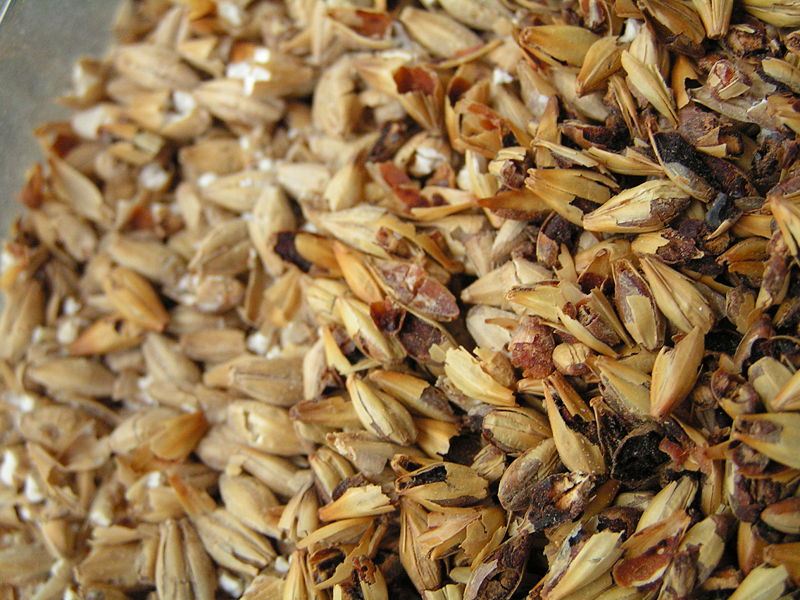
When selecting malts, it’s recommended to go with the types that have a pronounced bready, malty profile, with caramel malts also being acceptable in reasonable amounts.
The idea is to have a grain bill that introduces a rich malty flavour profile, without being overpowering and too-intense. Think of using malts such as:
- Pale Malt
- Lager Malt
- Biscuit Malt
- Light Crystal Malts
Roasted malts are generally a no-go unless used in sparse amounts for minor colour or flavour adjustments.
Honey
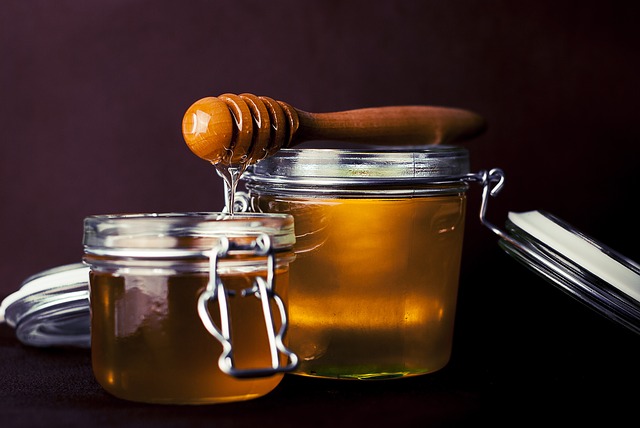
Honey makes up the second part of the fermentables list and it’s obvious that it should also deliver a pronounced flavour without being too intense.
Types of Honey
There are a lot of types of honey so choose the one you like the flavour of. If you are not sure it’s recommended to go with wildflower honey for the most balanced profile, but you can also use orange-blossom with great results.
Clover or cotton honey might be just too delicate as its flavour will be lost behind the malt base.
On the other hand, eucalyptus, avocado, or buckwheat honey is known for its assertive taste and aroma, so it would be best to use less of these types of honey in a braggot.
Whatever type of honey you choose to go with, though, make absolutely sure that it’s unpasteurized and unflavoured. This way you will be able to get the most natural flavour out if it.
The best place to source such honey is your local farmers market, though some store-bought products can also be quite good for making both mead and braggot. Just read the label carefully and get a little taste if possible to assess the flavour.
Hops? Hops!
When it comes to hops, it’s best to keep the hopping schedule on the mild side and use low-alpha noble varieties.
Since the newer hop varieties such as Citra, Mosaic, Simcoe, Galaxy and the likes are known for their intense aroma, it’s best to avoid these altogether as they will simply overpower the delicate interplay between malts and honey.
Go with modest amounts of hops such as East Kent Golding, Hallertau, Fuggle and similar, both for light bittering and some herbal/floral notes added late in the boil. Just make sure to keep the hop character in the backseat, or avoid hopping the brew altogether.
What Yeast To Use In Braggot?
Another very important ingredient to consider for braggot is yeast.
First of all, since most interpretations of braggot tend to fall to the heavier side of the OG spectrum (with gravities between 1.095-1.100 being quite common) choosing a strain with high alcohol tolerance is a must.
Otherwise, you risk getting an under-attenuated brew with possible off-flavours due to excessive yeast stress.
Second, the flavour contribution of the yeast should also be taken into account when formulating the recipe. On the one hand, most Belgian strains tend to have high alcohol tolerance and attenuation, yet their high phenol and ester production may overpower the delicate honey and malt flavours.
On the other hand, some estery strains can actually add more complexity to the bouquet and make the drink all the more interesting, think Saison yeast for example.

That’s why you should consider carefully what type of yeast you’ll be using in order to obtain the desired flavour profile in your braggot.
Third, braggot can also be fermented with something other than traditional brewers yeast. No, we’re not suggesting Brettanomyces, though it sure may deliver some interesting results. In a couple of years.
We’re talking about wine and mead yeast strains. Since most meads are fermented with winemaking yeast, which is optimized for processing fructose sugars, it’s natural to consider this option for making a braggot.
But bear in mind that most wine yeast strains may have a hard time processing maltose, which is likely to land your brew on the sweeter and more full-bodied side of the flavour spectrum.
Braggot Brewday
Actually making a braggot is not that different from making an ordinary high-gravity beer such as Barleywine, Belgian Strong Ale, or Russian Imperial Stout.
The use of honey, however, adds a couple of additional steps to the brewday, but it’s nothing too complicated. It’s best to learn with a basic example, so let’s start off with a recipe:
Highland Braggot Recipe
Specifications:
- OG: 1.100
- ABV: 10-11%
Ingredients (5 gallon / 19l):
- 10lb (4.5kg) Pale malt
- 5lb (2.2kg) Munich malt
- 4lb (1.8kg) Wildflower honey
- 0.5lb (0.22kg) Crystal/Caramel 10 malt
- 1oz (28g) Hallertau Mittelfruh hops
- Scottish Ale Yeast
Method
It is advisable to prepare a yeast starter if you are using liquid yeast or rehydrate according to the package instructions if using dry yeast.
● Mill the grains, then mash with single infusion mash at 65°C / 150°F for 75 minutes.
● Lauter then collect the wort and bring it to a boil.
● Boil for 75 minutes, add half of the hops at 60 minutes and the second half at 5 minutes before the end of the boil.
● Cool the wort, aerate, transfer to the fermenter (take a hydrometer reading at this point should you wish), and add yeast.
● Let ferment for 7 days then add honey to the primary fermenter.
● Leave the braggot to ferment completely until no visible signs in the airlock for at least 3 days. A period of conditioning of at least a few weeks at this point will be beneficial.
● Rack off the yeast, package in bottles or keg, then let it age for at least 2 months.
There are two significant points, which make a braggot brewing cycle a bit different from an ordinary beer.
When To Add The Honey?
When should we use the addition of honey? In our recipe, we’ve opted for adding it during primary fermentation, and there are several reasons for that.
Any mead-maker will tell you that adding honey during the boil not ideal since it will drive off most of the delicate honey flavours and defeat the whole purpose of using this ingredient.
Some people may choose to add it at flameout when the wort has cooled a bit, and that’s is a viable option.
However, if you’re not sure about the yeast viability and how it may act within such a saturated wort right from the start, it’s best to take things slow and add the honey when most of the sugars from the malt have been fermented. This will help reduce the risk of yeast stress and stuck fermentation.
Should A Braggot Be Still or Carbonated?
Carbonation in braggot is optional.
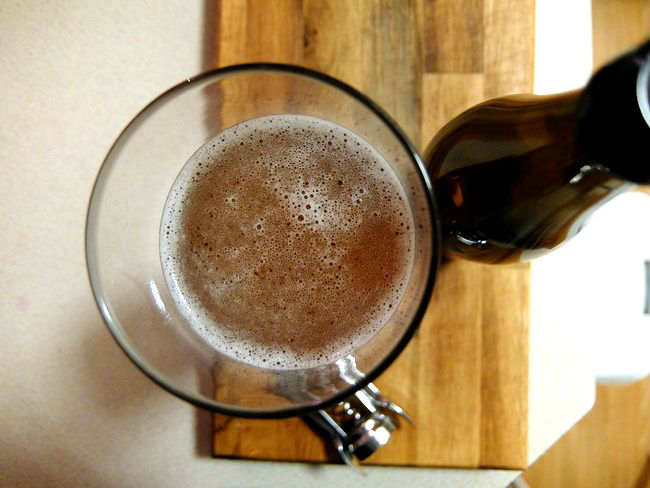
Traditionally it had either no or very little carbonation, similar to a still mead or strong barleywine.
However, there’s definitely plenty of arguments in favour of carbonation, since it will make the beverage more drinkable and provide a counter-balance to the sweetness if your braggot ends up quite sweet.
Either way, it’s entirely up to you, since there are no strict rules regarding the carbonation levels in a braggot.
Make Your Own Braggot
As you can see, marrying grain and honey is not only something that has been done far back into the past but also quite easy to pull off from a homebrew perspective
There’s nothing too complicated about it, and if you’ve done your share of high-gravity brewing, this shouldn’t pose much of a challenge.
Just make sure to select an adequate yeast strain, provide plenty of oxygen to the wort, keep the fermentation temperature within the strain’s optimal interval, be patient to let the braggot ferment completely, and age it for at least a couple of months.
The results will surely be intriguing and satisfying, and you’ll end up having an excellent sipper for those chilly winter nights by the fireplace.




Trackbacks & Pingbacks
[…] Braggot – Barley Mead […]
Leave a Reply
Want to join the discussion?Feel free to contribute!